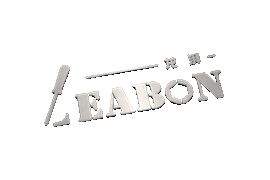Woodworking Accessories Tips
Selection Principles of Four-sided Planer for Woodworking Accessories
When choosing a four-sided planer for woodworking, it is nothing more than choosing the number of cutter shafts and the adjustment position between each cutter shaft. Generally, the selection should be based on factors such as the shape of the workpiece to be processed, batch size, positioning during feeding, determination of the processing base, and the convenience of the workpiece passing through the cutter shaft. There is no fixed principle for choosing a four-sided planer depending on the environment in which it is used and the type of workpiece to be processed. When choosing a machine tool, one should consider a main processing direction, take into account the processing requirements of other directions, make arrangements, comprehensively consider technical requirements and capital investment, and reasonably select a certain type of machine tool to meet the most processing needs, minimize cost expenditure, and be the simplest and most convenient to operate and maintain. (1) Select the processing capacity of the machine tool based on the possible processing batch size. The processing capacity of the machine tool mainly depends on the feed speed, cutter shaft speed and cutting power of the machine tool. (2) Determine the number of cutter shafts based on the cross-sectional shape required by the workpiece to be processed. The number of cutter shafts of the four-sided planer determines the processing capacity of the machine tool, mainly determining the cross-sectional shape of the workpiece that can be processed by the machine tool. In general, workpieces with regular surface shapes can be processed by a four-spindle four-sided planer to meet the requirements. Workpieces with one surface as a profile and the other three surfaces as planes can be processed by a five-spindle four-sided planer, where the last spindle is preferably a rotatable and adjustable spindle. The processing of workpieces with complex cross-section shapes, such as those including a cutout, a head, and two planes, or linear surfaces for decoration, requires a seven-spindle or eight-spindle four-sided planer. In general, when the feed rate is high, the cutting amount, that is, the cutting depth and thickness, should be small, and the spindle speed should be increased. When the feed rate is low, the cutting amount can be appropriately increased, and the spindle speed can be reduced accordingly to meet the motor power requirements, but the speed should not be too low, otherwise it will affect the surface quality of the machine. Within the range allowed by mechanical strength and toughness, the higher the speed of the machine tool spindle, the better the surface quality of the machine. (3) According to the size and accuracy requirements of the workpiece to be processed, determine the relative positions and feeding methods between the machine tool spindles. The maximum width of the workpiece that can be processed by the four-sided planer is the main parameter of the machine tool. The load surface size, width and height (layer) of the workpiece determine the adjustment range between the upper and lower horizontal cutter shafts and the left and right vertical cutter shafts of the four-sided planer, as well as the adjustment and positioning accuracy of the cutter bar. Under normal circumstances, the cutter bar of the machine tool should not exceed the adjustable range of the cutter bar position, and a certain margin should be left, otherwise it will affect the processing accuracy. Different feeding methods will affect the positioning and positioning of the workpiece during machine processing, thereby affecting the processing accuracy of the workpiece. Under normal circumstances, for thin and long workpieces with poor rigidity, the clamping force of the clamping rollers of the feeding mechanism should be small, and the clamping force should be correspondingly large. For workpieces with good rigidity such as short square materials, the pressure of the clamping rollers of the feeding mechanism can be large, and the clamping can be reduced accordingly.
(4) Focus on one product, while taking into account the development of other products, and try to choose a machine tool with an expandable process range to meet the needs of future development of the enterprise.
